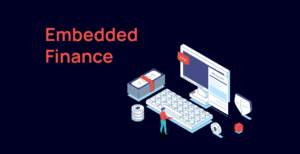Despite the rapidly changing financial landscape, millions of people around the world still do not have access to traditional banking services. Many people refer to those without access to traditional banking services as the “unbanked.” They cannot open a bank account due to high fees, lack of required documentation, or because they live in remote areas.
Digital currencies are changing the way people access financial services by providing safe, affordable, and easy-to-use options. Mobile banking, digital wallets, and blockchain solutions make it easier for people without a bank account to save, borrow, and start a business. This article explores how digital finance is changing lives and opening new paths to financial freedom.
The Problem of Cash Exclusion:
For many people without a bank account, regular banking services are simply not possible. In remote areas, physical bank branches may not be available, and strict identification requirements make it impossible for people without official identification to access services. In addition, people with low incomes cannot afford banking services due to the high costs of opening an account. People without access to financial services must use cash, which is dangerous and makes it harder for them to save, invest, or build credit. Individuals and small businesses are unable to grow because they lack access to credit, leaving them stuck in poverty.
How Digital Finance is Changing the Rules:
Digital finance is filling this gap by using technology to provide financial services without the need for physical infrastructure. Africans can use M-Pesa and other mobile payment platforms to send, receive, and store money using just a regular mobile phone. You can use digital wallets to make secure payments, take out small loans, and even purchase insurance products, all from your smartphone. Blockchain and cryptocurrency solutions are also growing in popularity. They give people without regular bank accounts access to decentralized financial services. These new ideas are making money more accessible than ever.
Mobile Money: Banking in Your Pocket
Mobile money is one of the most important digital financial instruments because it has transformed the economies of developing countries. People can use services like M-Pesa, GCash, and Paytm to deposit and withdraw money without a bank account. Small businesses can accept digital payments, which means they don’t have to rely too much on cash. Farmers can receive payments for their crops directly via their mobile phones, reducing the risk of theft and loss. For millions of people, mobile money has become a lifeline, giving them economic liquidity and financial security.
Digital Wallets and Payment Apps:
Digital wallets are another excellent way to give people access to their money. Apps like PayPal, Venmo, and Alipay allow people to shop, pay bills, and even invest at very low costs. Digital wallets are easier to use than traditional banks, as they usually only require a smartphone and an internet connection. Some platforms also offer microloans and credit creation to help users build a financial history. These services give people without bank accounts the opportunity to access the formal financial system.
Blockchain and Decentralized Finance (DeFi):
Blockchain technology enables financial inclusion by eliminating the middleman. Decentralized finance (DeFi) platforms allow people to borrow and earn interest without having to open a bank account. Cryptocurrency is a wonderful option for people living in countries with unstable economies, hyperinflation, or strict banking regulations. DeFi is still in its infancy, but it can provide completely borderless financial services and give unbanked people more control over their money.
Government and NGO Initiatives Driving Adoption:
Governments and nonprofits play a crucial role in making digital finance more accessible. To help people open a bank account or use mobile payment services, many countries have set up national digital ID systems. Nonprofits are working with fintech companies to teach people about money management and how to use digital technology responsibly. These efforts are accelerating financial inclusion and making it easier for disadvantaged groups to participate in the global economy.
Overcoming Barriers to Digital Finance:
Despite some advantages, digital finance also has many challenges. Smartphones may be less available, and rural people may not use the internet as much. In addition, people may not trust digital systems. Online security risks and scams are extremely dangerous, especially for new users. To address these issues, companies are developing offline payment solutions, low-cost phones, and strong security measures. Education and advocacy are essential to ensure that people trust and use a product.
Success Stories: Real-World Examples
We’ve already seen how digital finance can impact the unbanked. M-Pesa has helped small businesses in Kenya grow and lifted some 200,000 families out of poverty. The Unified Payments Interface (UPI) has given millions of people access to the formal financial system in India. Women in Bangladesh are using mobile money to become financially independent and no longer rely on male relatives. These success stories show that digital money is more than just a convenience; it’s a way to help people become financially independent.
How Financial Inclusion Will Evolve in the Future:
As technology advances, the potential for digital finance to help the unbanked is growing rapidly. Artificial intelligence and biometric authentication can make opening an account easier, while 5G networks will make connectivity in remote areas more accessible. Central bank digital currencies (CBDCs) are growing in popularity and could also become a secure, government-backed alternative to cash. Digitalization is the path to financial inclusion, and the unbanked are the beneficiaries.
Conclusion:
Digital banking is not just a new technology but a movement that is making the world more financially equal. Digital solutions are empowering the unbanked to take control of their finances by providing easy-to-use, affordable, and secure alternatives to traditional banking services. While there are still some challenges to be addressed, there has been undeniable progress. If governments, fintechs, and NGOs continue to innovate and work together, we can create a future where everyone has access to financial services. The unbanked are no longer excluded; they are entering a new era of economic potential.
FAQs:
1. Who is considered unbanked?
The unbanked are unable to access regular banking services. This is usually because they do not have the right documents, the fees are too high, or they live in rural areas where there are no bank branches.
2. What is the process behind mobile money?
People can use mobile money to store, transfer, and receive money using just a mobile phone, and generally do not need a bank account. A secure digital platform conducts transactions.
3. Is digital finance safe for people without a bank account?
Digital finance is generally safe, but users should be wary of scams and fraud. Trusting apps, enabling security measures like two-factor authentication (2FA), and avoiding public Wi-Fi for transactions can improve security.
4. Can digital finance help people without a bank account to build credit?
Yes, some digital finance platforms offer small loans and report transactions to credit bureaus, which helps users build credit over time.
5. What measures is the government taking to promote the development of digital finance?
The government is supporting digital finance by setting regulations for fintech companies, issuing national digital identity cards, and funding initiatives to educate people about money so that more people will use it.



